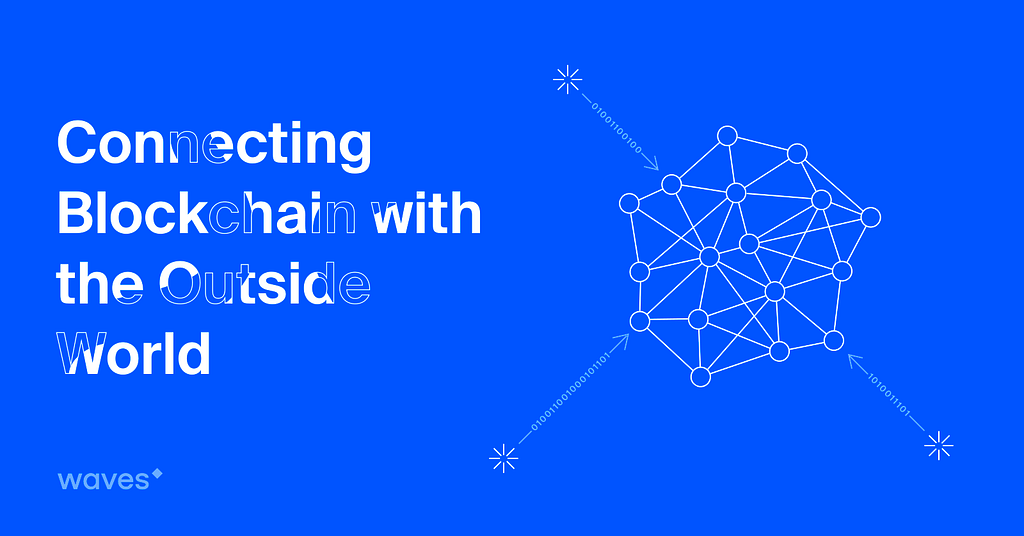
Data oracles are indispensable to blockchain infrastructure. In the first article in a series devoted to blockchain data oracles, we discuss how Waves’ protocol will help make an oracle accessible to the entire community.
A smart contract written on the blockchain is unable to access data outside its own network. This problem is resolved by using data oracles, which are basically agents that find real-world information and feed it to the blockchain for use by smart contracts and dApps.
In other words, oracles are tools that facilitate communication between the blockchain and the real world. Data they feed to the blockchain could be as diverse as currency exchange rates, weather reports, results of elections or sporting events, commodity prices or even flight and train timetables.
Execution of smart contracts could be triggered by meeting pre-set conditions which, in turn, require data of the right kind to be available.

Major blockchain platforms have recently shown interest in creating tools for data oracles, such as Ethereum, which runs Ethereum Oracle.
Waves offers its own data oracle tool, based on the already available DataTransactions.
On a purely technical level, creating a data oracle for the blockchain is very straightforward.
All you need to do is take an outside source of information and send an initializing DataTransaction, announcing the oracle and explaining what type of data it will be providing. Subsequently, the data will be accessible for smart contracts.
However, there is one problem. How can you know if a data oracle for a specific type of information is available on the blockchain, how often it is updated and what source of information it uses?
Waves’ solution is a protocol for data oracles, which is basically a standardized set of fields for entering information to the blockchain.
Regardless of whether data is entered manually or automatically, the protocol includes fields for main values, which will help other community members to find the oracle and learn what type of data it feeds to the blockchain, what the third-party source is and how frequently the data is updated.
A developer can use an existing protocol, which is available on Waves’ GitBook, or expand it, if necessary.
The process is simple. To make things easier for developers, Waves offers a data oracle developing tool, which will be integrated in a single interface with a public directory of data oracles, broken down by category.
If a developer wants their oracle to be accessible to other members of the Waves community, helping the entire ecosystem and also generating revenues, they can fill in various DataTransaction fields, describing the oracle.
That information will be converted, and an initializing DataTransaction will be formed.
Later, the developer will be able to update the oracle’s data — for instance, change its status or add a new field in the description. We suggest that developers update the oracle’s version for each format change and provide a brief description of changes, making the oracle’s operation easier for other developers who already use its data.
Once the initializing DataTransaction has been sent, the oracle will be accessible in the directory in the category stated by the developer.
Use Waves’ oracle development tool to create a data oracle, and our protocol will help make your oracle visible on the blockchain!
Further down the road, there are plans to create a database of open-source protocols to help developers create standards for blockchain data oracles in various fields, with the ultimate goal of improving interoperability and compatibility of IT and blockchain systems.
Join Waves Community
Read Waves News channel
Follow Waves Twitter
Subscribe to Waves Subreddit
Waves Platform Releases Data Oracle Tool was originally published in Waves Platform on Medium, where people are continuing the conversation by highlighting and responding to this story.
